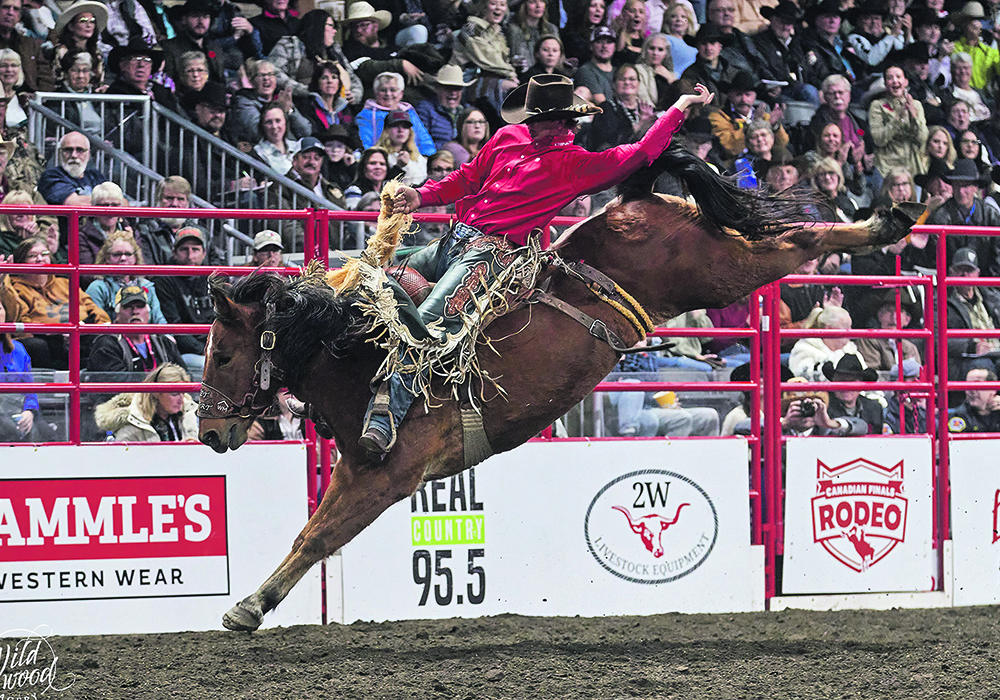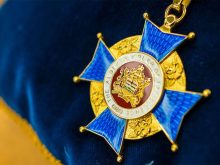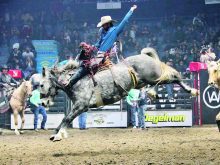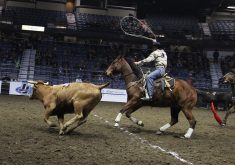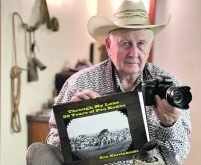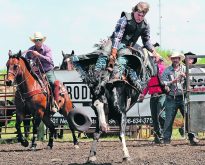Riders make a splash at National Finals Rodeo, particularly in the saddle bronc category, where six finished in the top 15
Canada sent one of its largest contingents in recent memory to the National Finals Rodeo in Las Vegas and featured the top 20 professionals in 11 categories.
Canadian riders especially excelled in the saddle bronc category with six Albertans finishing in the top 15.
It was saddle bronc rider Kole Ashbacher’s first time to the big show in Vegas.
“They treat you like gold. You roll in there and getting your back number for the first time, there are no words to describe it. One of the best feelings I’ve ever had in the world. When you ride into that arena for the grand entry the first time, I was on the verge of being sick between nerves and excitement.”
The Arrowwood, Alta., cowboy said he set out at the beginning of 2022 to reach the National Finals Rodeo (NFR), and the hard work and weeks on the road were worth it to reach the final.
“It’s a long year. I had to go to 97 rodeos that I actually competed at just to get there,” said Ashbacher. “And that’s just the ones that counted.”
But it was all worth it, he said.
“I set my goal at the start of the year of making those finals and I wouldn’t change it. I’m getting set to do the same thing for next year,” he said.
For Layton Green of Millarville, Alta., it was his first go round at the NFR but the saddle bronc rider’s enthusiasm was obvious.
“It’s what you work for all year,” said Green. “It can be a really long 10 days or it can blow by in a hurry.”
Green’s 2022 NFR was more of the former than the latter with some disappointing draws but, “that’s what next year is for,” he added.
Green said complete commitment is needed to get to the finals.
“As much as a guy would like to sit around at home in the summer and poke around the few Canadian rodeos, you’re not going to make the NFR doing that. You got to make some sacrifices — some big sacrifices — and be gone on the road for four months in summer,” he said.
“Hit one rodeo one night and then drive 12 hours that night to another one the next day. It’s pretty much like that all summer long.”
Denny Phipps, Canadian Professional Rodeo Association general manager, said the number of Canadian saddle bronc riders taking part in the NFR was impressive and likely the largest ever sent in that category.
“The level of contestant today is stronger than I’ve ever seen,” said Phipps, who competed over two decades in bareback riding. “They are rodeo athletes. Yes, they are cowboys, but they are what I would consider a professional athlete and they look at this as their job. They put in the work in the gym and on the mental side of things.”
The global pandemic put a crimp in rodeos, especially in Canada where a number of major competitions were sidelined.
“I know talking with committees, they didn’t know what was going to happen coming out of COVID, how people were going to change their habits,” said Phipps, highlighting the concerns at events like the Ponoka, Alta., Stampede and whether the lull would see popularity drop.
But with health restrictions lifted, the sport appears to be as healthy as ever.
“All the rodeos I attended this year were packed. There was record attendance at a number of events. It showed that people were really clamouring to come back to rodeo,” said Phipps.
Green shares that sentiment.
“At 100 percent of rodeos, you wouldn’t even know COVID had been a thing. There might even be bigger crowds than there normally were now, as compared to what there used to be,” he said.
Ashbacher said Canadian rodeos definitely felt the effects of the public health restrictions.
“The COVID pandemic was very hard on the sport in Canada. It made it so you had to have a lot of desire to be competing. You had to sacrifice a lot because in 2020, the only rodeos that were going on were in the (United States),” said Ashbacher.
But the comeback of the sport has been strong, he added.
For Phipps, the recovery of the sport post-pandemic has washed away many of the fears leading up to 2022.
“The future is what I’m excited about. Our athletes are top of the world, top-tier athletes, who I believe in my heart of hearts would be successful in whatever sport they chose and we’re lucky to have them in our sport,” said Phipps.
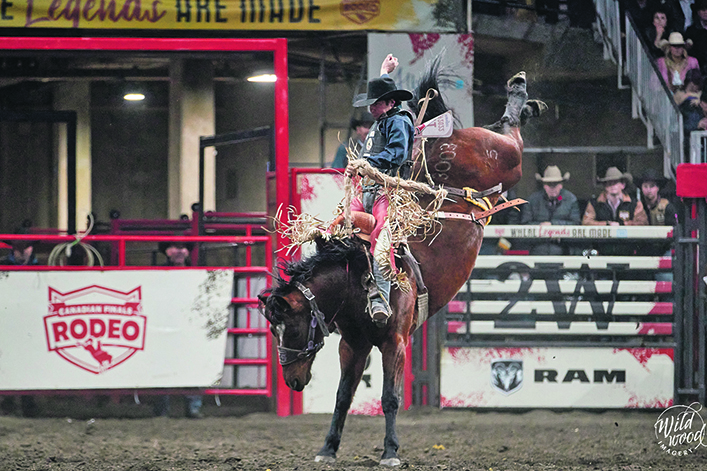
The success of cowboys like Zeke Thurston, who took top spot in saddle bronc along with the Hay brothers, Logan and Dawson, who finished third and seventh in the event, reflects how strong the Canadians are in the sport, said Phipps.
The nine Canadians brought home $750,000 in prize money, which Phipps said shows how well Canada is representing at the most prestigious North American rodeo.
Phipps, Green and Ashbacher agree that the unique comradeship found in rodeo makes the sport special.
“There probably is a lot easier ways to make a living than riding bucking horses but I can promise you there is not a more fun lifestyle to make a living,” said Green. “The things you get to see, the people you get to meet and the places you get to go is like no other.”
For Ashbacher, he said while he might compete against Green, “we’d both go over and help the other. I’d go help Layton with his horse right after I finished competing to see if he could beat me. That doesn’t happen in very many sports at all.”
That’s just the way rodeo is, added Phipps.
“Competitors are just rooting for each other to do something really cool,” said Phipps.
While saddle bronc was the main event for many Canadian entries at the Las Vegas finals this year, it wasn’t the only event that featured Canadian cowboys.
Curtis Cassidy finished 14th in the all-around category, Orin Larsen finished 14th in bareback riding, Jay Buhler placed ninth in team roping and Jared Parsonage finished 13th in bull riding.


